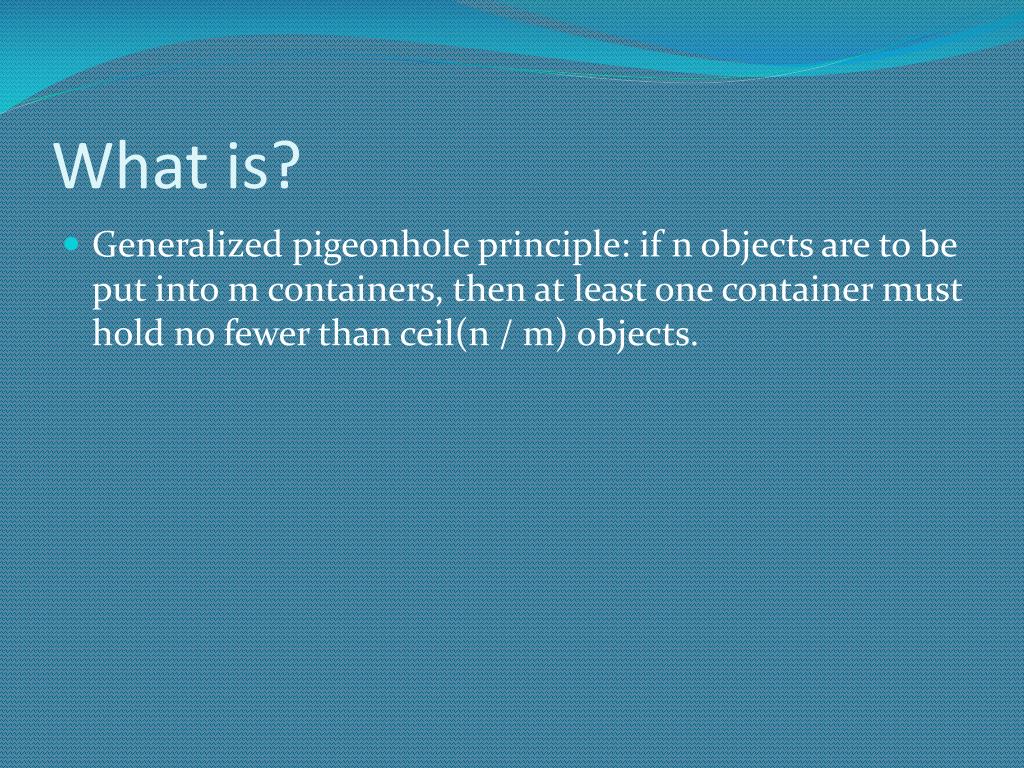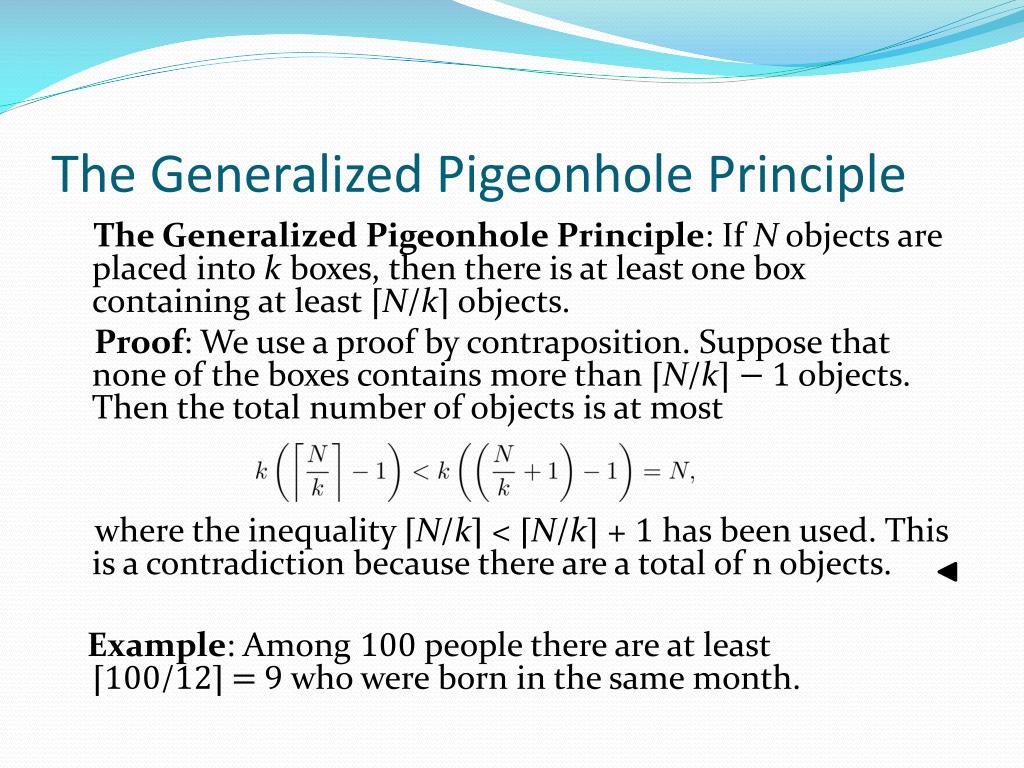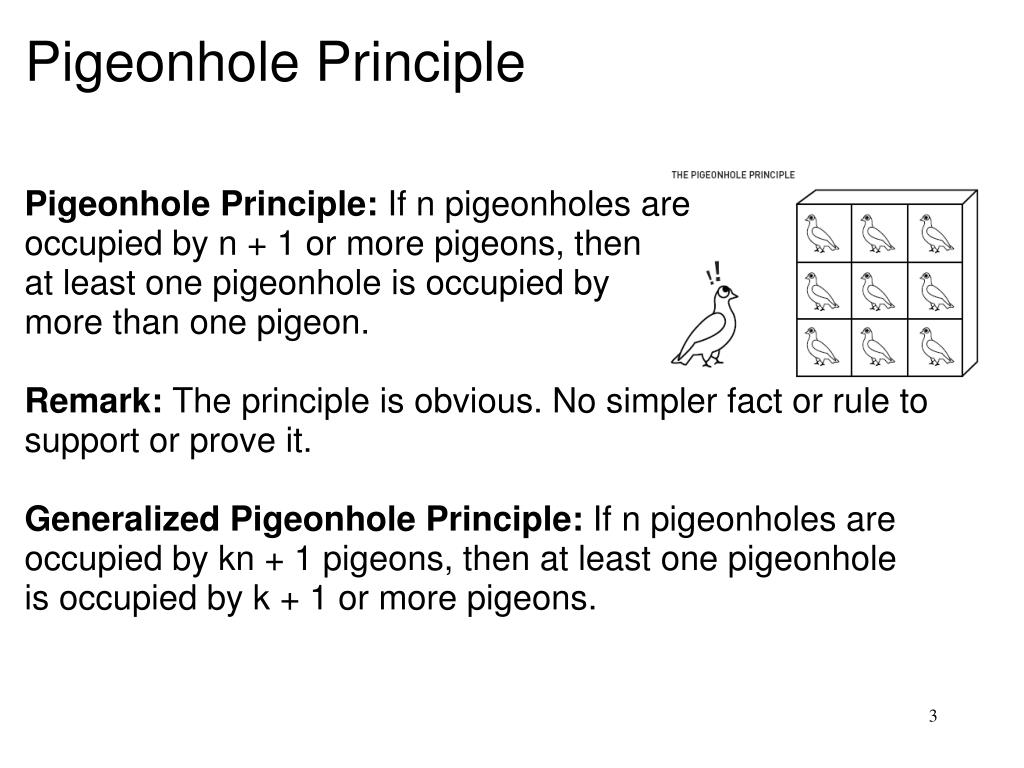

Here there are n = 10 pigeons in m = 9 holes. One is in each: ai = aj + 14, for some i and j. Let ai be the number of pills taken through the end of the ith day.

Prove: there is a period of consecutive days in which the patient takes a total of 14 pills.A patient has 45 pills, with instructions to take at least 1 pill/day for 30 days.some column contains at most 4 students.some column contains at least 5 students.41 students are seated randomly in the chairs (1 student/chair).50 chairs are arranged in a rectangular array of 5 rows and 10 columns.If 2 integers are in the same set either their difference is divisible by 10 or their sum is divisible by 10.Partitioning the integers into equivalence classes according to their remainder when divided by 10 yields too many classes.Set this up so that there are 6 pigeon holes.

Given a set of 7 distinct integers, there are 2 whose sum or difference is divisible by 10.If x1, x2, …, x8 are distinct integers, then some pair of these have the same remainder when divided by 7.If 401 letters were delivered to 50 houses, then some house received at most 8 letters.

In a group of 61 people, at least 6 were born in the same month.If 4 different pairs of socks are scrambled in the drawer, only 5 socks need to be selected to guarantee finding a matching pair.In any group of 367 people, there must be at least 1 pair with the same birthday.The average number of pigeons/hole = k + 1/n and k + 1/n = k + 1. If kn + 1 pigeons are distributed among n holes, then some hole contains at leastk + 1 pigeons.If 2n + 1 pigeons are distributed among n holes, then some hole contains at least 3 pigeons.If n + 1 pigeons are distributed among n holes, then some hole contains at least 2 pigeons.Therefore, some hole contains at least A pigeons and some hole contains at most A pigeons. All holes contain at most n(A - 1 ) nA pigeons, a contradiction. Assume every hole contains at most A - 1 pigeons. Assume every hole contains at most A - 1 pigeons or every hole contains at least A + 1 pigeons.Assume A is the average number of pigeons/hole.Proof of Alternate Principle By contradiction: Cannot have all holes contain more than the average. Intuition A A A Cannot have all holes contain less than the average. + mn - n objects are in the boxes, a contradiction.Īnother Form of Pigeonhole Principle If A is the average number of pigeons/hole, then some hole contains at least A pigeons and some hole contains at most A pigeons. the nth box has at most mn - 1 objects.the 2nd box has at most m2 - 1, and …, and.+ mn - n + 1 objects are put into n boxes, and + mn - n + 1 objects are put into n boxes, Let m1, m2, …, mn be positive integers.At most 40 balls were chosen, a contradiction. Assume that 41 balls are chosen from this set and that at most 11 red, 14 white, 3 blue, 9 garnet, and 3 gold balls are chosen. Proof by contradiction: (use DeMorgan’s law) 1.If 41 balls are chosen from a set of red, white, blue, garnet, and gold colored balls, then at least 12 red balls, 15 white balls, 4 blue, 10 garnet, or 4 gold balls chosen.There must be at least 13 different months. Assume the room has 13 people and no 2 people have their birthday in the same month. Example 1 In a room of 13 people, 2 or more people have their birthday in the same month.


 0 kommentar(er)
0 kommentar(er)
